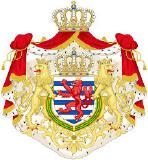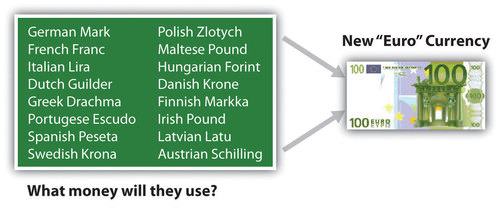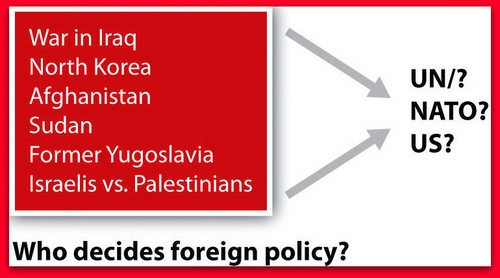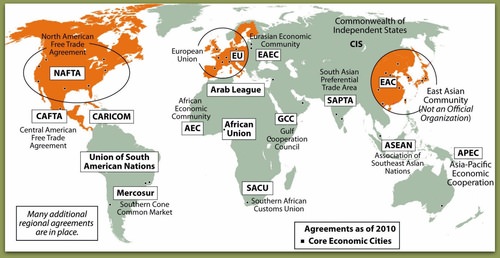5.3: European Union and Supranationalism (2 Days)
- Page ID
- 1883
- Describe how Europe has been divided during the 20th century.
- Describe the measures or methods that have been implemented to help unify Europe.
- Explain the dynamics of supranationalism and its advantages and disadvantages.
- Summarize briefly how globalization has increased with the advent of the European Union.
TEKS Regional World Geography Unity 05: Europe Chapter 5.3 European Union and Supranationalism
WG.10A Describe the forces that determine the distribution of goods and services in free enterprise, socialist, and communist economic systems.
WG.10D Compare global trade patterns over time and examine the implications of globalization, including outsourcing and free trade zones.
WG.11B Identify the factors affecting the location of different types of economic activities, including subsistence and commercial agriculture, manufacturing, and service industries.
WG.11C Assess how changes in climate, resources, and infrastructure (technology, transportation, and communication) affect the location and patterns of economic activities.
WG.12A Analyze how the creation, distribution, and management of key natural resources affects the location and patterns of movement of products, money, and people.
WG.14A Analyze current events to infer the physical and human processes that lead to the formation of boundaries and other political divisions.
WG.14C Analyze the human and physical factors that influence the power to control territory and resources, create conflict/war, and impact international political relations of sovereign nations such as China, the United States, Japan, and Russia and organized nation groups such as the United Nations (UN) and the European Union (EU).
WG.15A Identify and give examples of different points of view that influence the development of public policies and decision-making processes on local, state, national, and international levels.
WG.15B Explain how citizenship practices, public policies, and decision making may be influenced by cultural beliefs, including nationalism and patriotism.
WG.23A Use case studies and GIS to identify contemporary challenges and to answer real-world questions.
WG.22A Design and draw appropriate graphics, such as maps, diagrams, tables, and graphs to communicate geographic features, distributions, distributions, and relationships.
WG.22C Use geographic terminology correctly.
WG.22D Use standard grammar, spelling, sentence structure, and punctuation.
TEKS and ELPS for Regional World Geography Unit 05--Europe from TEKS Resource System
The European Union and Supranationalism
The world economy has a competitive marketplace. Each independent country has to compete economically to earn national income, but not all countries are equal in natural or human resources. The smaller countries of Europe may have difficulty competing with the world’s core economic powers such as Japan or the United States. Some of the countries of Europe are small in terms of physical area. The total physical area of all the European countries together equals only 60 percent of the total physical area of the United States. However, in regard to Europe, physical size may not an indicator of economic ability. A number of European countries are major forces in the global economy.
The economic forces of globalization have motivated the nation-states of Europe to work together rather than compete with each other. Western Europe as a region is highly industrialized and has a high standard of living. Unified, the countries are a major economic power in the world. Separately and independently, they may not be able to compete at the same level as other globally recognized trading blocs.
To become unified after a century of centrifugal forces dividing them has not been easy. Consider the cultural forces that have been active in Europe. Centripetal forces unifying the realm include a common Christian religion, Indo-European language groups, and a Caucasian ethnic background. These forces have not resulted in a unified Europe. The closest resemblance to a unified Europe was the Roman Empire, which was held together by military force.
During the 20th century, there were three centrifugal divisions in Europe: (1) World War I divided Europe and the industrialized world; (2) World War II pitted the Axis powers (Germany and Italy) against the Allied powers (Great Britain, France, United States); (3) the Cold War. With the Cold War, the Iron Curtain, built of concrete, barbed wire, and land mines separated Communist Eastern Europe, which was dominated by the government of the Soviet Union, from the capitalist democracies of Western Europe, which were allied with the United States. When the Soviet Union collapsed in 1991, a new era arrived in Europe, and the power of unification emerged.
Unification Efforts in Europe
After World War II ended in Europe, the three small countries of Belgium, Netherlands, and Luxembourg realized that together they would be much stronger and recover more quickly from the war than if they remained separate. Belgium had banking and business; the Netherlands had industry, farming, and the world-class port of Rotterdam on the Rhine River; and Luxembourg had agricultural resources. To help recover from World War II, in 1944 the three countries signed an economic pact called the Benelux Agreement, which provided a successful example of unification and cooperation.
Implemented from 1948 to 1952, the Marshall Plan helped rebuild war-torn Europe with American aid and business connections. US businesses and corporations benefited from the increased international trade with Europe. To deter the European nations from going to war again, there needed to be an economic trade policy that encouraged a strong business climate. In 1957, the countries of France, West Germany, the Netherlands, Luxembourg, Italy, and Belgium signed the Treaty of Rome, which created the Common Market. This agreement provided the structure necessary to unify Europe under a European Union (EU) in 1992.
Despite many problems, since World War II, steady efforts have been made toward European unification. The EU was the structure for a common economic system with an agreed-upon governing body. It was designed as an economic trading bloc that could compete with the United States and Japan. A mechanism was finally in place for a supportive, unified Europe, but it would be up to the independent countries that joined this union to make it work.
Supranationalism
_EN.svg.png?revision=1) Members of the EU
Members of the EU| Coat of Arms | Flag | State | Capital | Accession | Population (2017) |
|---|---|---|---|---|---|
 |
 |
Austria | Vienna | 1 January 1995 | 8,772,865 |
 |
 |
Belgium | Brussels | Founder | 11,351,727 |
.svg.png?revision=1) |
 |
Bulgaria | Sofia | 1 January 2007 | 7,101,859 |
 |
 |
Croatia | Zagreb | 1 July 2013 | 4,154,213 |
 |
 |
Cyprus | Nicosia | 1 May 2004 | 854,802 |
 |
 |
Czech Republic | Prague | 1 May 2004 | 10,578,820 |
 |
 |
Denmark | Copenhagen | 1 January 1973 | 5,748,769 |
 |
 |
Estonia | Tallinn | 1 May 2004 | 1,315,635 |
 |
 |
Finland | Helsinki | 1 January 1995 | 5,503,297 |
 |
 |
France | Paris | Founder | 66,989,083 |
 |
 |
Germany | Berlin | Founder | 82,521,653 |
 |
 |
Greece | Athens | 1 January 1981 | 10,768,193 |
 |
 |
Hungary | Budapest | 1 May 2004 | 9,797,561 |
 |
 |
Ireland | Dublin | 1 January 1973 | 4,784,383 |
 |
 |
Italy | Rome | Founder | 60,589,445 |
 |
 |
Latvia | Riga | 1 May 2004 | 1,950,116 |
 |
 |
Lithuania | Vilnius | 1 May 2004 | 2,847,904 |
 |
 |
Luxembourg | Luxembourg City | Founder | 590,667 |
 |
 |
Malta | Valletta | 1 May 2004 | 460,297 |
 |
 |
Netherlands | Amsterdam | Founder | 17,081,507 |
 |
 |
Poland | Warsaw | 1 May 2004 | 37,972,964 |
|
|
 |
Portugal | Lisbon | 1 January 1986 | 10,309,573 |
|
|
 |
Romania | Bucharest | 1 January 2007 | 19,644,350 |
|
|
 |
Slovakia | Bratislava | 1 May 2004 | 5,435,343 |
|
|
 |
Slovenia | Ljubljana | 1 May 2004 | 2,065,895 |
 |
 |
Slovenia | Ljubljana | 1 May 2004 | 2,065,895 |
|
|
 |
Spain | Madrid | 1 January 1986 | 46,528,024 |
|
|
 |
Sweden | Stockholm | 1 January 1995 | 9,995,153 |
|
|
 |
United Kingdom | London | 1 January 1973 | 65,808,573 |
| Totals: | 28 countries | 511,522,671 |
 The European Union and the Language Question.
The European Union and the Language Question.Supranationalism is defined as the voluntary association of three or more independent states willing to yield some measure of sovereignty for mutual benefit. The Benelux Agreement of 1944 was a model for European supranationalism. Nations are often reluctant to give up any sense of independence, especially with the strong drive toward nation-state status. In Europe, each country might have its own language, currency, traffic laws, and legal system, which makes supranationalism difficult to accomplish. Supranationalism could erode the uniqueness of each state as Europe becomes more of a "United States of Europe."
One of the solutions proposed for the language problem for the European Union (EU) was to use the artificial language Esperanto as the common language. This solution did not receive much support from member states and was rejected by the EU. Esperanto, introduced in 1887 as a neutral language, was formed using words from the Latin, Germanic, and Slavic language groups (the three main language groups of Europe).
Inteligenta persono lernas la lingvon Esperanto rapide kaj facile. Esperanto estas la moderna, kultura lingvo por la tuta mondo. Lernu la internacian lingvon Esperanto.
Check Your Translation:
An intelligent person learns the language Esperanto rapidly and easily. Esperanto is the modern, cultural language for the whole world. Learn the international language Esperanto.
 The euro was adopted in 1999. However, not all EU countries use the euro.
The euro was adopted in 1999. However, not all EU countries use the euro.To address the differences in the many currencies used in Europe, the EU introduced a common currency called the euro. Initially, there was resistance, but it has been accepted by most EU members. Great Britain is a major economic player in the EU, but it has not adopted the euro as its main currency. It has kept the traditional English pound sterling. Most of the old currencies of EU members are being phased out and the single currency of the euro has become the standard. Even countries not currently in the EU have adopted the euro as their national currency.
Unification has created economic problems between the wealthy industrialized countries and the poorer regions of southern Europe. There is disagreement over how taxes or funds will be allocated. The poorer countries would like economic assistance in developing their industries. The wealthier nations are at times resistant to sharing their wealth. Italy has experienced this problem within its borders. Italy’s wealthy northern regions have hinted at separating from their poorer southern regions. This is an age-old problem that confronts governments of most countries.
Other questions arise with the supranational EU. How will the EU manage foreign affairs? Will the EU have a military? If so, how will it be managed? Who will command it? What will happen to the current military assets of each member country? Travel within the EU has also changed. Before the EU, people traveling between European countries encountered border checks at which their passports were checked and stamped, and different traffic laws existed for each country. This is changing. Once inside the EU, there are no more border stops, and traffic and travel are becoming streamlined with common laws.
 NATO is the North Atlantic Treaty Organization (Western Europe and North America).
NATO is the North Atlantic Treaty Organization (Western Europe and North America).Global trading blocs such as the EU are not uncommon. The United States, with Mexico and Canada, developed the North American Free Trade Agreement (NAFTA) to create a global economic trading bloc. Japan and neighboring countries work together as the East Asian Community (EAC), which is not an official organization but is a recognized entity that operates as an economic core area with its own alliances. Other larger or smaller economic trading blocs exist across the globe. Every continent has organizations that promote economic development for their regions or countries. Many of these agreements have developed into a type of economic supranationalism.
European countries have to confront both the centrifugal forces that rally their nations to remain independent and the centripetal forces that call for integration into the EU. European cultures have a history of struggling to retain their heritage and traditions. The strong devolutionary forces that advocate for nation-state status are challenged by the need to belong to a larger union for economic survival. Europeans are caught between holding on to cultural heritage and moving forward economically in a competitive global economy. Similar forces are also felt in other regions of the world.
Germany, which united its western and eastern regions after the Iron Curtain came down, has become economically powerful in Europe. Germany is also the largest country in Europe by population. Other EU nations are concerned that Germany might once again exert domination or bring about division in Europe. The Cold War, World War I, and World War II are not easily forgotten. They are vital events in European history that affected the whole world. Because of this historical memory, many Europeans are suspicious of how the EU may evolve; whereas, others are more open to a unified European community.
About the European Union
According to the 1993 Copenhagen European Council, "a country has to meet certain requirements to join the EU. These requirements include a stable democracy which respects human rights and the rule of law; a functioning market economy capable of competition within the EU; and the acceptance of the obligations of membership, including EU law. Evaluation of a country’s fulfillment of the criteria is the responsibility of the European Council."
In 2018, the European Union had 28 member states representing over 500 million people. A number of additional states are applying for membership, so the number of EU member states continues to change. Each EU state now has its own military for national defense. A majority of EU members also hold membership in the North Atlantic Treaty Organization (NATO), which is a political alliance between Western European countries, Canada, and the United States. The EU is one of many global supranational entities. The EU is one of the three main core economic areas of the world.
 This map illustrates the global groups with the big three core areas of the world.
This map illustrates the global groups with the big three core areas of the world.Europe has experienced strong centripetal and centrifugal forces throughout its history. From the Roman Empire to the European Union, the historical pattern of development in Europe is a model study in regional geography. From empire to nation-state and now to a union, the continent struggles to confront these cultural forces that unite and divide. The EU is an example of what supranationalism can produce.
To compete in a global economy, the nation-states of Europe must cooperate and coordinate their industrial activities to support their high standard of living. The EU member states are a part of the elite "have" nations of the world. They face many questions about their future, and they will be watched closely by the rest of the world.
- Although World War I, World War II, and the Cold War divided Europe during the 20th century, the EU has emerged as a unifying force for the European people.
- The Benelux Agreement, the Marshall Plan, and the Treaty of Rome all helped set the stage for the European unification that evolved into the EU.
- Supranationalism has provided European countries with the ability to compete economically in the global marketplace. Difficulties have been in the areas of cultural and historical differences that have influenced the continuing economic and political challenges.
- The EU represents a core economic region for the planet.
- North America and Eastern Asia each have worked to create competitive trading relationships to compete with the EU economically.
Vocabulary Terms
| European Parliament | Directly elected by the people every five years May propose amendments to legislation and it may reject proposals from Council outright Apportionment of representatives is not strictly based on population |
| Euro | A common currency proposed by the European Union for a majority of its member nations |
| European Union | Supranational organization that integrates the states of Europe |
| NATO | North Atlantic Treaty Organization- a political alliance between Western European countries, Canada, and the United States |
| United Nations | Can vote to establish a peacekeeping force in a hotspot and request states to contribute military forces Suborganizations promote the general welfare of the world |
Applying Knowledge
Interactive Notebook Activity
- Describe how Europe has been divided during the 20th century.
- Describe the measures or methods that have been implemented to help unify Europe.
- Explain the dynamics of supranationalism and its advantages and disadvantages.
- Summarize briefly how globalization has increased with the advent of the European Union.
Discussion and Study Questions
- What was the purpose of the Iron Curtain? How did it divide Europe?
- What is the relationship between EU membership and the index of economic development?
- How did the Marshall Plan and the Benelux Agreement contribute to the creation of the EU?
- How has devolution in Europe affected the dynamics of the EU?
- Where is supranationalism evident in other world regions?
- What were the three main divisive events in 20th-century Europe?
- Why aren’t all European countries members of the EU?
- Why would European countries be suspicious of Germany being a member of the EU?
- What methods or actions has the EU taken to encourage unity and cooperation among its members?
- Where would strong devolutionary forces be evident in Europe?
Geography Exercises
Using this map, complete the following:
- Locate and draw a circle around the location of the Iron Curtain.
- Locate and label the Benelux countries.
- Locate and label the regions of Europe where the Germanic, Slavic, and Romance languages are dominant.
- Locate and label the location of the three main core economic areas of the world.
- Locate and label the countries of Europe that are not members of the European Union (EU).
Mapping Exercise
Cooperation Since 1945: Identify and explain different types of international cooperation since 1945
Helpful Websites for the Study of Geography
Canadian Encyclopedia is an encyclopedia funded by the Canadian government covering all branches of knowledge. Their scholarly collection includes interactive materials.
CIA World Factbook provides information on the people, history, government, economy, energy, geography, communications, transportation, military, and transnational issues for the world's entities.
Congress.gov is a US government website where you can find federal legislation, past and present, as well as information about the US legal system.
Drug Enforcement Administration (DEA) is a government agency website that provides current news, resources, topics of interest, information about drugs, careers in the DEA, and a tip hotline.
Library of Congress is the largest library in the world and provides manuscripts, files, information, pictures, and videos.
NASA Earth Observatory (NEO) is a US government agency website that allows users to search for and retrieve satellite images of Earth.
National Archives is a US government website that provides historical documents, photos, records, publications, and educator resources.
National Oceanic and Atmospheric Association (NOAA) is a US government agency website that provides weather-related information and ocean research.
National Map is a website by the United States Geological Survey and other federal, state, and local agencies that delivers topographic information for the United States.
NationMaster is a massive central data source and a handy way to graphically compare nations.
Real-Time World Air Quality Index is a website that measures most locations in the world for air pollution in real time.
StateMaster is a unique statistical database, which allows you to research and compare a multitude of different data on US states.
United Nations (UN) is an international organization founded in 1945 and made up of 193 member states. The UN maintains international peace and security, protects human rights, delivers humanitarian aid, promotes sustainable development, and upholds international law.
United States Census Bureau is a US government agency that provides a population clock, data, surveys, statistics, a library with information and infographics, news about the economy, and much more.
United States Geological Survey (USGS) is a US government agency website that provides scientific information about the natural hazards that threaten lives, the natural resources we rely on, the health of our ecosystems and environment, and the impacts of climate and land-use change.
Whitehouse.gov is a US government website that provides the latest presidential news, information about the budget, policy, defense, and many more topics.
World Health Organization (WHO) is under the United Nations and provides leadership on matters critical to health, shapes the research agenda on health, and monitors the health situation and assessing health trends around the world. Their website provides information on the state of health around the world, outbreaks, current health news, and more.
World Trade Organization (WTO) is an intergovernmental organization that regulates international trade. The website provides information on the history of the multilateral trading system, featured videos, news and events, trade topics, and more.
| Image | Reference | Attributions |
 |
[Figure 2] | Credit: https://2012books.lardbucket.org/boo...d-suprana.html Source: https://saylordotorg.github.io/text_world-regional-geography-people-places-and-globalization/section_05/d295a948c80da7a6898e3ade48208804.jpg License: CC BY-NC 3.0 |
 |
[Figure 3] | Credit: https://2012books.lardbucket.org/boo...d-suprana.html Source: https://2012books.lardbucket.org/books/regional-geography-of-the-world-globalization-people-and-places/s05-03-the-european-union-and-suprana.html License: CC BY-NC 3.0 |
 |
[Figure 4] | Credit: https://2012books.lardbucket.org/boo...d-suprana.html Source: Saylor URL: http://www.saylor.org/books License: CC BY-NC 3.0 |








